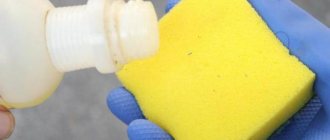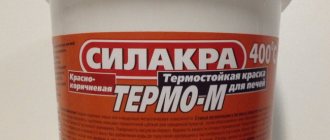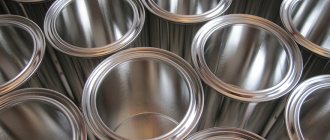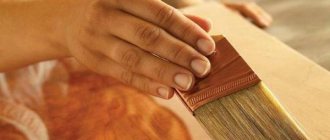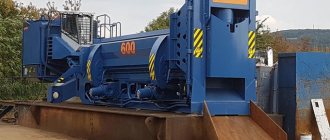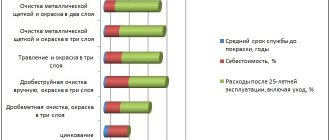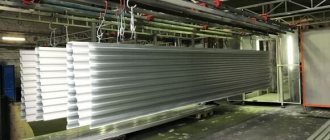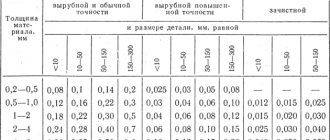Chrome paint: features, varieties, composition
Initially, chrome plating technology was associated with applying a thin layer of metal to the surface of an exclusively metal product. Until now, the industry invariably uses a special electrical method for this purpose. However, today an alternative method has emerged to give objects made of various materials a mirror-metal appearance. This is painted using chrome paint.
Peculiarities
Mirror paint achieves its effect against a thin, durable coating with highly reflective properties. Such properties are due to the fine metal powder included in its composition. In addition to lighting characteristics, the coloring composition is characterized by high heat resistance.
In addition, depending on the filler, it can give the finished coating different shades - black, matte, golden, etc. Special varnish components evenly distribute the material over the surface and enhance the mirror effect of the coating, which differs little from its galvanic counterpart.
Chrome and gold plating Source kraski-net.ru
See also: Catalog of companies that specialize in paints and varnishes and related work
Varieties
There are two main categories of coloring compositions of this type:
- One-component.
- Two-component.
The first mainly includes chrome paint in cans. Despite the ease of use and widespread use among amateurs, paint compositions of this type are not suitable for all types of work. Among their obvious advantages are:
- Ready for use. To use the product, simply shake and spray in the required amount onto a given area.
- Versatility in material. Paints metal, glass, wood and plastic surfaces equally well.
- No need to use special equipment. The can sprays itself - without additional devices. It is easy to store, transport and use almost anywhere.
- Wide range of shades. The dye is ideally stored in a pressurized container.
Chrome paint in cans Source prom.st
However, chrome in a can is also not without its disadvantages:
- It is not always possible to achieve a mirror effect. Often the result is far from ideal and does not look like real chrome.
- Painting technology is quite complex. To get a real chrome coating, you need to carefully prepare the surface and protect the room from temperature changes and air movements. This is difficult to do at home.
- Poor adhesion of the composition to the structure of the material due to the very rapid hardening of the base.
- The savings in using spray cans only appear when painting a small area. Using them for large surfaces is no cheaper than renting professional equipment.
- Paints of the same shade from different manufacturers may differ in tone.
Chrome plating from a can Source gidpokraske.ru
Is chrome plating necessary?
Applying chrome to individual parts and body elements has become a common procedure. Similar services are offered in almost every workshop, and there are also instructions for performing work at home. The only question remains: is there any point in wasting time and money?
- A thin layer of heavy metal provides additional protection on several points at once. From the point of view of the functional application of the proven process, no disadvantage can be found.
- The surface acquires a pleasant shine and requires minimal maintenance, which makes it an excellent solution for lazy motorists.
- After chrome plating, the service life increases. This fact is confirmed by practical analytical data that show how profitable it is to turn to specialists.
- The costs of carrying out the work are incomparably lower than the benefits obtained. You don’t have to worry about expenses, as they remain small.
There is no need to talk about the advantages and disadvantages; it is much easier to highlight only a few points that best describe chrome plating. They are enough to make a decision that makes you think about additional costs. Still, taking care of your car guarantees its longevity and reduces regular maintenance and care costs.
Chromium is a heavy metal that has not been used in industry for years. Its heavy weight and high cost forced it to abandon its beneficial properties. Today, the process of creating the thinnest layer on any metal surface has been studied in detail. It acquires the same advantages, so it remains reliable for a long time during operation. So it’s time for drivers to forget about saving money and seriously think about changes to their own vehicle, which will affect not only the appearance.
Basic shades of chrome paint
Aluminum powder in the colorant is responsible for creating the classic silver shade. To obtain other colors, chrome paint is saturated with the following ingredients:
- Gilding is crushed metal particles with a yellow tint.
- Black – aluminum powder mixed with black pigment.
- Other colors - to give a characteristic shade, dyes of the corresponding color are added to the composition.
In addition, you can give the desired shade to the finished coating by tinting the varnish, which is applied after the main layer of chrome paint has dried.
TOP manufacturers
Chrome mirror paint for metal is currently manufactured by the following popular manufacturers:
- RUSH Power. Budget paint with optimal spraying in 1 layer. Used for graffiti.
- Bosny CHROME. Inexpensive product for small metal products. A final varnish coating is required.
- Chrome Effect. Mid-priced paint option. Popular among car owners. Maximum chrome effect.
Painting recommendations
It is better to apply liquid chrome to any suitable surface, following a series of recommendations:
- Reliability, durability of results and durability are guaranteed by paints only from trusted manufacturers.
- To create a high-quality, uniform coating without smudges, experience and skills are required. Therefore, before painting the product, it is better to practice well.
- Chrome paint is not recommended by manufacturers for application to soft plastic items.
- The varnish applied after painting must correspond to the properties of the coating. Otherwise, it may peel off.
The wide variety of chrome paint types on the market allows even an inexperienced user to successfully perform chrome plating if necessary. However, when painting complex interior elements or parts, it is better to seek help from specialists.
Painting
Before applying paint and varnish material, it is necessary to prepare the working surface. First of all, the part should be removed from the car. You can leave it and cover all adjacent surfaces, however, given that chrome paint is usually used to cover small elements such as wheels, moldings, bumpers, mirrors, they are usually removed. Next, the part needs to be washed using car shampoo, removing all dirt. Then the integrity of the surface being prepared for painting is assessed. If there are defects, they must be eliminated. Scratches are puttied and, after drying, cleaned with sandpaper, and corrosion is removed by grinding. The final stage of preparation is degreasing.
After this, a primer is applied to the working surface in three layers with breaks for each of them to dry for 4 - 6 minutes. To speed up this process, you can blow the surface with a hairdryer. And before applying the third layer, the second layer is treated with fine-grained sandpaper.
Before applying the paint and varnish material, the can must be shaken several times to give the paint a uniform structure. Spraying is carried out from a distance of 25 - 30 cm from the working surface. For chrome paints, it is recommended to apply a black base coat first and polish it. Usually two coats of paint are applied, as this results in intense color and shine. The latter is especially true for materials that imitate chromium. It takes 15-20 minutes for each of them to dry, and complete drying of the coating takes approximately 3 hours at a temperature of at least 20°C. Then the surface is polished and varnished.
Briefly about the main thing
Modern chrome paint consists of an epoxy or acrylic base, metal powder and colored pigment - standard, gold, black, chameleon, etc. There are two types of coloring compounds:
- With one component.
- With two components.
The first ones are made in cans. They are used most often, as they do not require special skills in dyeing technology. The latter are prepared in a special way before use and sprayed using a spray gun. Most often they are used to paint plastic and metal surfaces. Painting should be carried out according to technology in compliance with the recommendations.
Ratings 0
Coverage options
Various dyes are added to chrome paint, which creates a unique special effect.
Classic
The composition with the natural white-silver color of aluminum is considered classic. The surface looks mirror-like, as if covered with white foil. Classic white imitation chrome can be found in the design of furniture parts for living rooms, bedrooms and kitchens, as well as on curtain rods and jewelry.
Black chrome
A translucent black dye is added to the aluminum powder. Dark paint looks impressive on car rims and grilles. A more discreet option is matte chrome. It lacks an eye-catching shine. The surrounding objects are only reflected in muted colors. Matte finishes are more often used in interiors.
Colored chrome plating
Of the colored paints, golden compositions are the most popular. They contain yellow metallic powder. Using yellow shades, they create an imitation of gold or brass. Like classic silver, gold plating is found on lamp shades and stands of lamps, floor lamps, curtain rails, door handles, and home decor.
Expert opinion
Zakharova Irina Yurievna
Cleaning professional with 15 years of experience. Our best expert.
Ask a Question
Chrome effect paints come in green, red, crimson, purple, and blue. Silver compositions can be colored according to individual preferences.
Chameleon
The most interesting, but less practical coloring option is using a composition that changes color as the temperature rises. Thermochromic chameleon paint comes in two types:
- reversible - colored or white, changes color when heated and returns to the original when cooled;
- irreversible - changes color once and is not restored.
Chameleon paint is not widely used in everyday life. A transparent composition is applied to glasses and cups with designs that appear when the drinks are hot and disappear as they cool. In industry, a color-changing composition is used to paint indicators that warn of a critical increase in temperature.
See also
How and with what can you dilute dried gouache, how to dilute it to a liquid state
